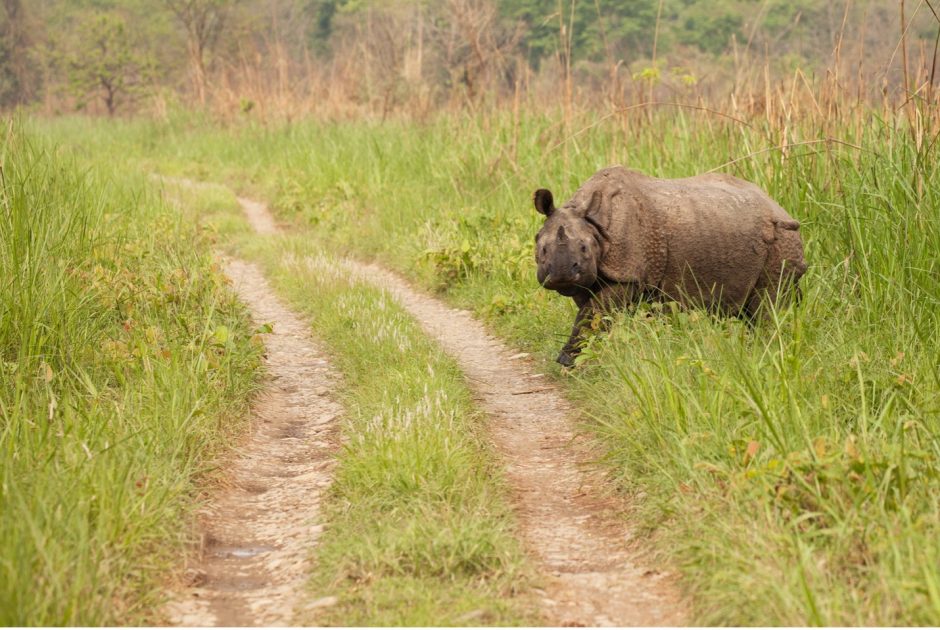
3 Tips for Photographing Rhinos in Nepal
Asian one-horned rhinos are a sight to behold. Whether you’ve seen their counterparts in Africa or not, they are just plain different. Not only is their appearance distinct, but the way in which you can photograph them differs, too. While they certainly can be seen from land, you may actually have most of your sightings while they are in water—a very different landscape indeed!
Follow these tips for making the most out of your time exploring the wildlife-rich lowlands of Nepal in search of the venerable Asian one-horned rhinoceros.
Get ready for low-light photography
Asian rhinos are indeed active during the day, but they become even more so at dawn and dusk hours. Thus, you’ll want to be ready with low-light photography tactics to ensure crisp shots.
ISO is of course the main way to easily increase light sensitivity in your camera. However, there is a threshold beyond which the photo becomes grainy and of poor quality. Thus, you’ll want to know your own camera’s limit.
A rule of thumb is that you never want to go above ISO 1600. However, if you have a newer, full-frame camera (you know who you are) you can likely get to 3200 and maybe even 6400. Remember, each time you double your ISO, you are letting in twice the light.
However, since ISO only goes so far, you’ll want to also get your aperture down to the lowest f/number possible, and shutter speed low as well. I wouldn’t go below 1/200, though, as small movements of the animal will cause irrevocable blur. Even 1/200 is quite slow.
But here’s the game-changer…
One trick that I use often for low-light photography is my exposure compensation meter. If you’ve never used this before, I highly recommend becoming familiar with it no matter how novice or advanced a photographer you may be.

In low-light settings, I make sure that I do not have my exposure meter on zero, i.e., neutral or even (all meaning the same thing).
By default you camera is set on zero, so you may have encountered this problem in the past. When your exposure is set to even, your camera is trying to let in a “normal” amount of light—as if you were in full daytime conditions. When photographing at dusk, you really don’t want your scene to appear as if in full daytime conditions—embrace the darkness! Thus, I often set this exposure meter at -1 full stop.
In addition to recreating the scene more accurately, this helps tremendously with keeping my ISO low and/or my shutter speed fast. By doing this step, I’m telling my camera to let in less light, allowing me to shoot faster or be at a lower ISO than if I were to keep it at even.
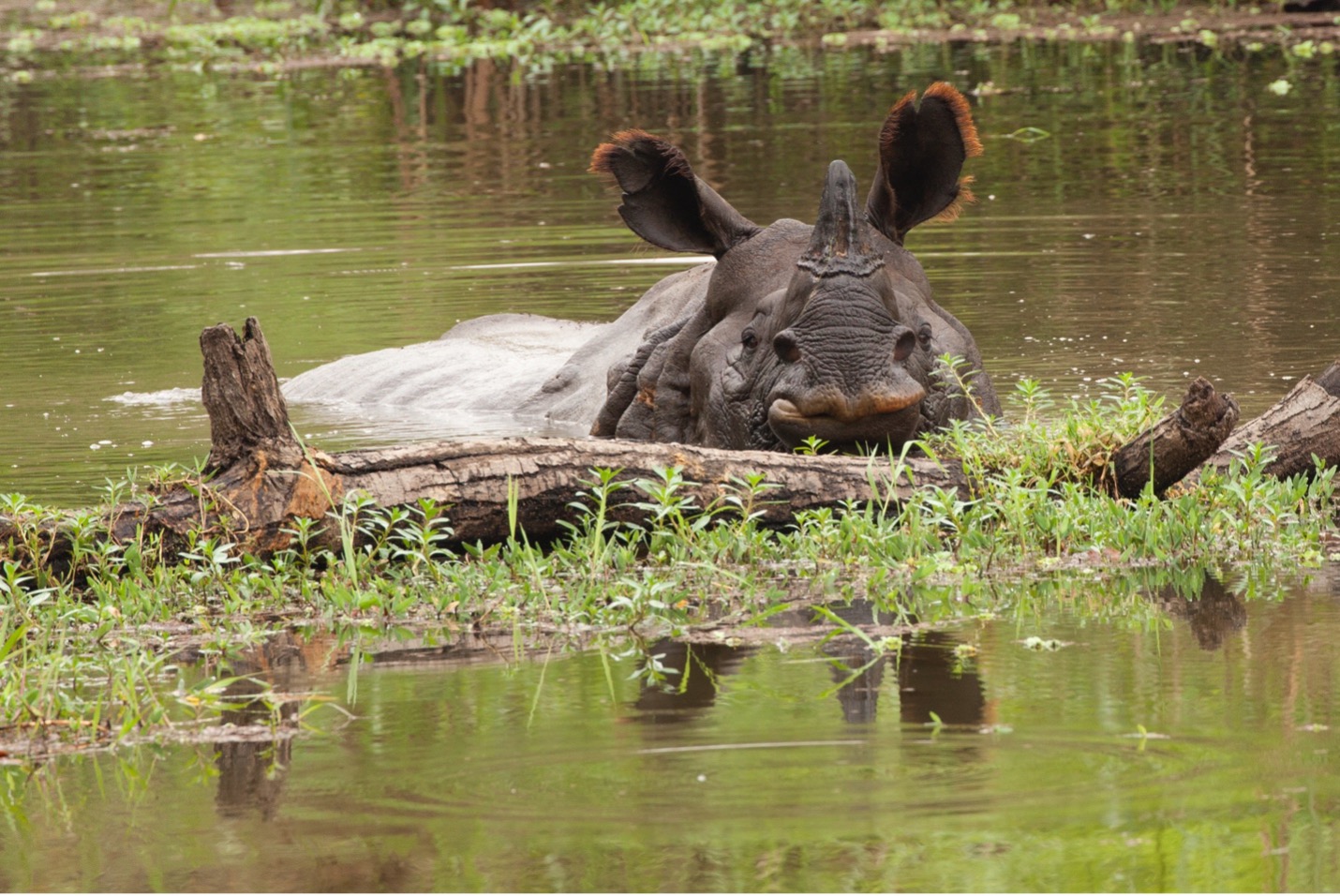
Use the water surface wisely for composition
Anticipate at least some photography of rhinos in water. While the water surface obstructs the view of the entire animal, making for perhaps a less powerful scene, you have the chance to use the water to your advantage, making it even better than if the animal were out of the water.
As your safari vehicle or safari boat moves, pay close attention to the features in the water to help frame the animal. Notice how in the above photo the log is helping draw the attention to the rhino? This small element provides more emphasis in the photo and should be utilized whenever possible.
On the other end of the spectrum, there may be opportunities to highlight the bleakness of the water.

Do your best to resist filling the frame with the rhino and instead feature the water as part of its habitat. And think about the rule of thirds, placing one third water, one third land, and one third sky.
But also don’t hesitate to exaggerate composition with the water involved, as in the below photo. Here, you can an interesting vibe with the rhino lurking barely over the water’s edge, with our safari camp peeking over the hill in the distance. Also notice the “noise” in this photo…an example of what happens when you shoot with too high of an ISO.
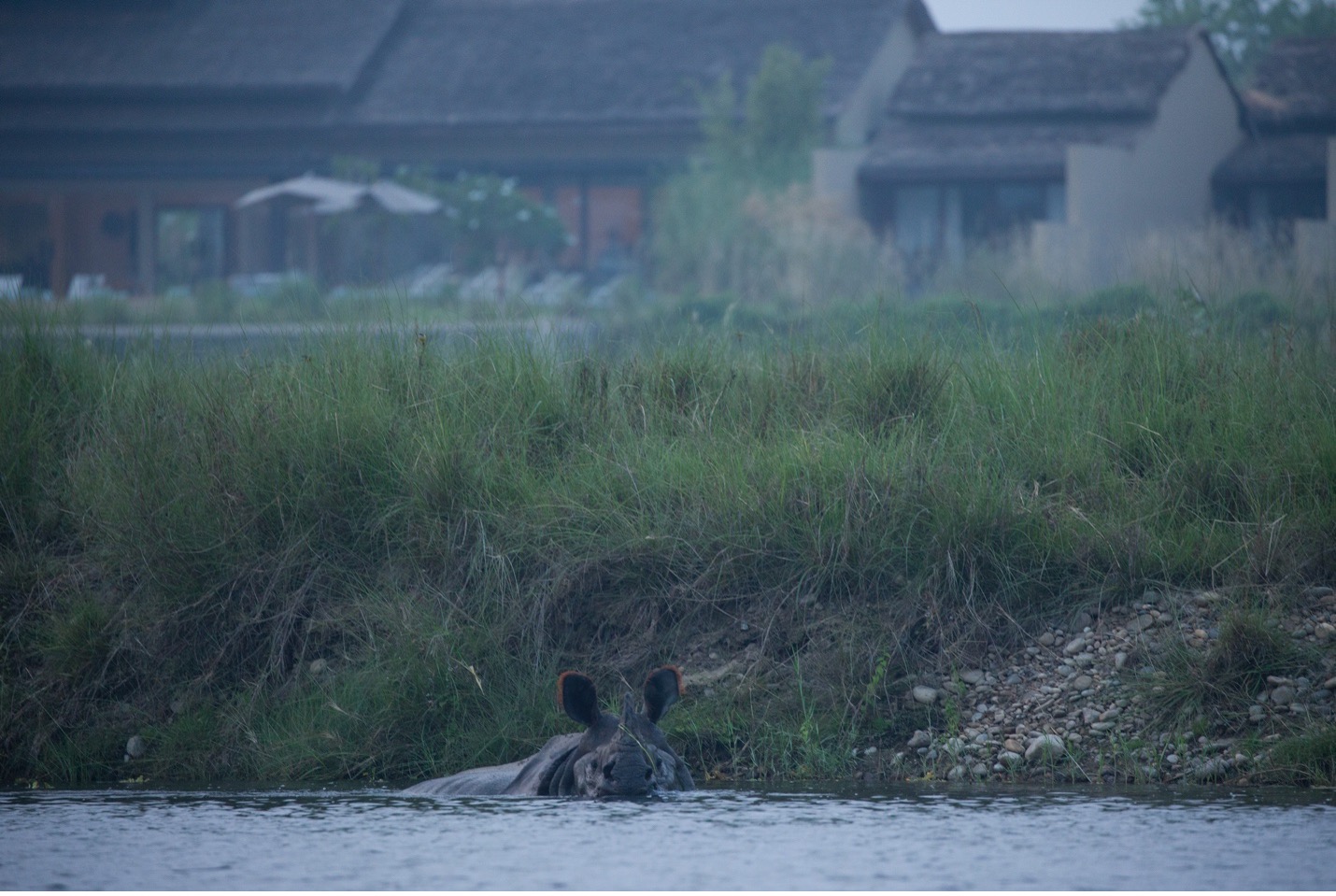
Freeze motion while on land
Finally, you’ll also have a good chance at photographing rhinos from terra firma, via safari vehicles.
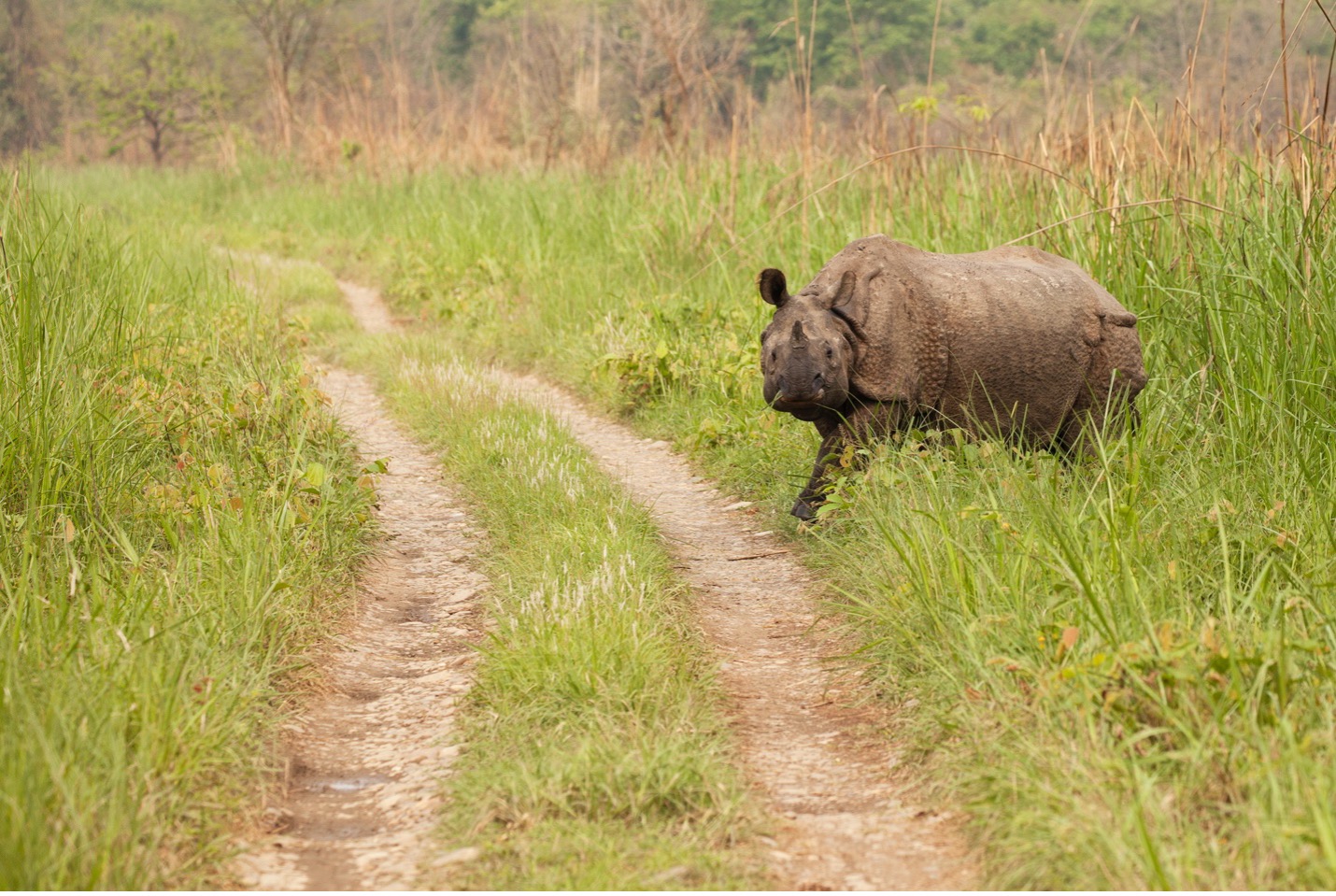
For such a large animal, they can really move! The lesson here is to be sure you have a fast-enough shutter speed enabled to freeze the motion. With fast-moving animals, 1/1000 is a good starting point, but be ready to go up to 1/1500 or even 1/2000 if you have ample light and the animals are really moving.
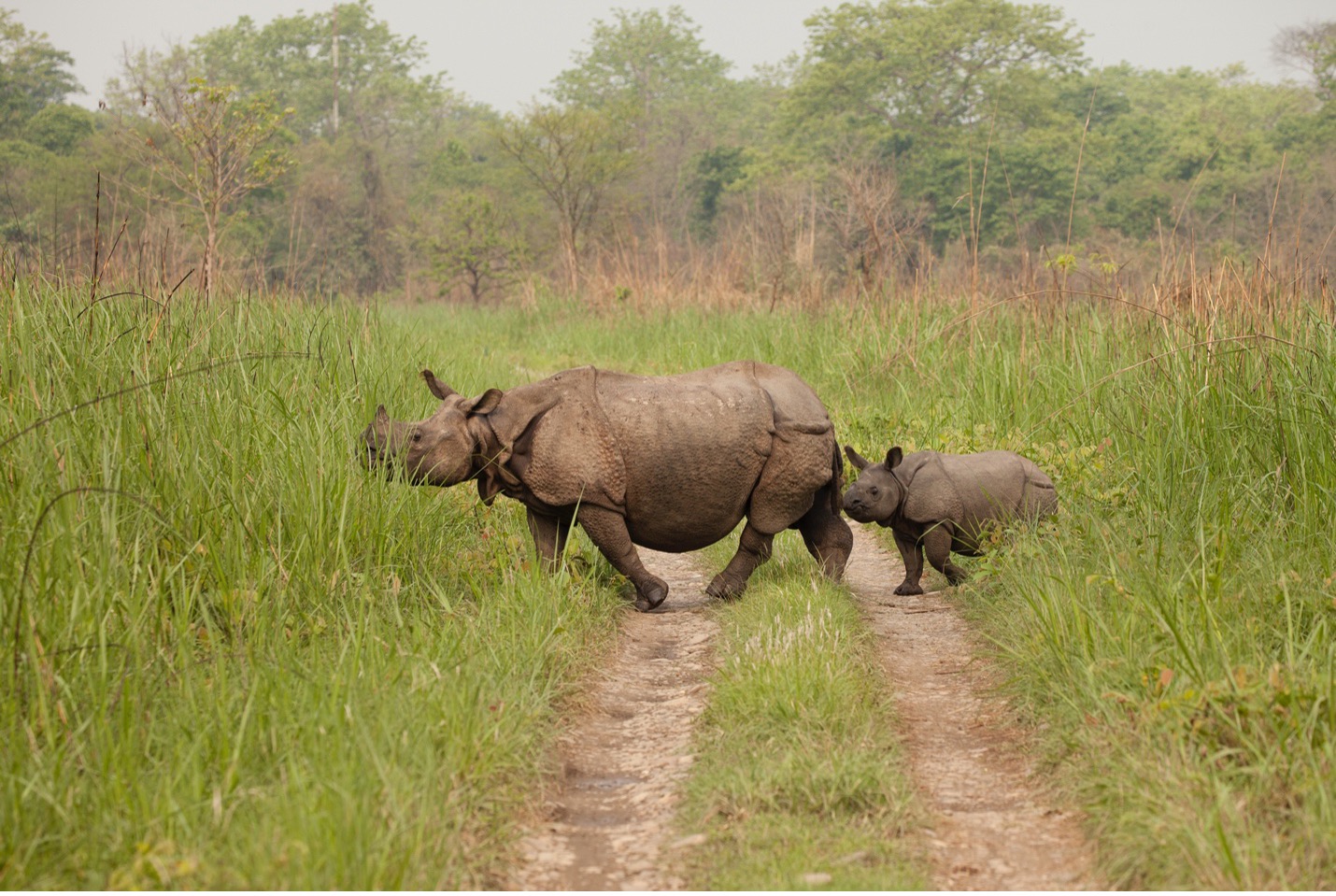
Dang, just missed! If I had only hit the shutter moments prior, I may have captured momma without her face obscured by grass…
Photographing rhinos is exhilarating no matter where in the world you are. However as one of the last great strongholds of the mighty Asian one-horned rhino, Nepal stands as a conservation success story. It’s also perhaps the best place in the world to photography them, with the terai lowlands of Chitwan National Park being prime.
If you’re headed to this part of the world, I hope these tips help even a little, and that you come home with some photos that document your amazing journey into the heart of conservation travel!
All the best,

Court
Leave a reply